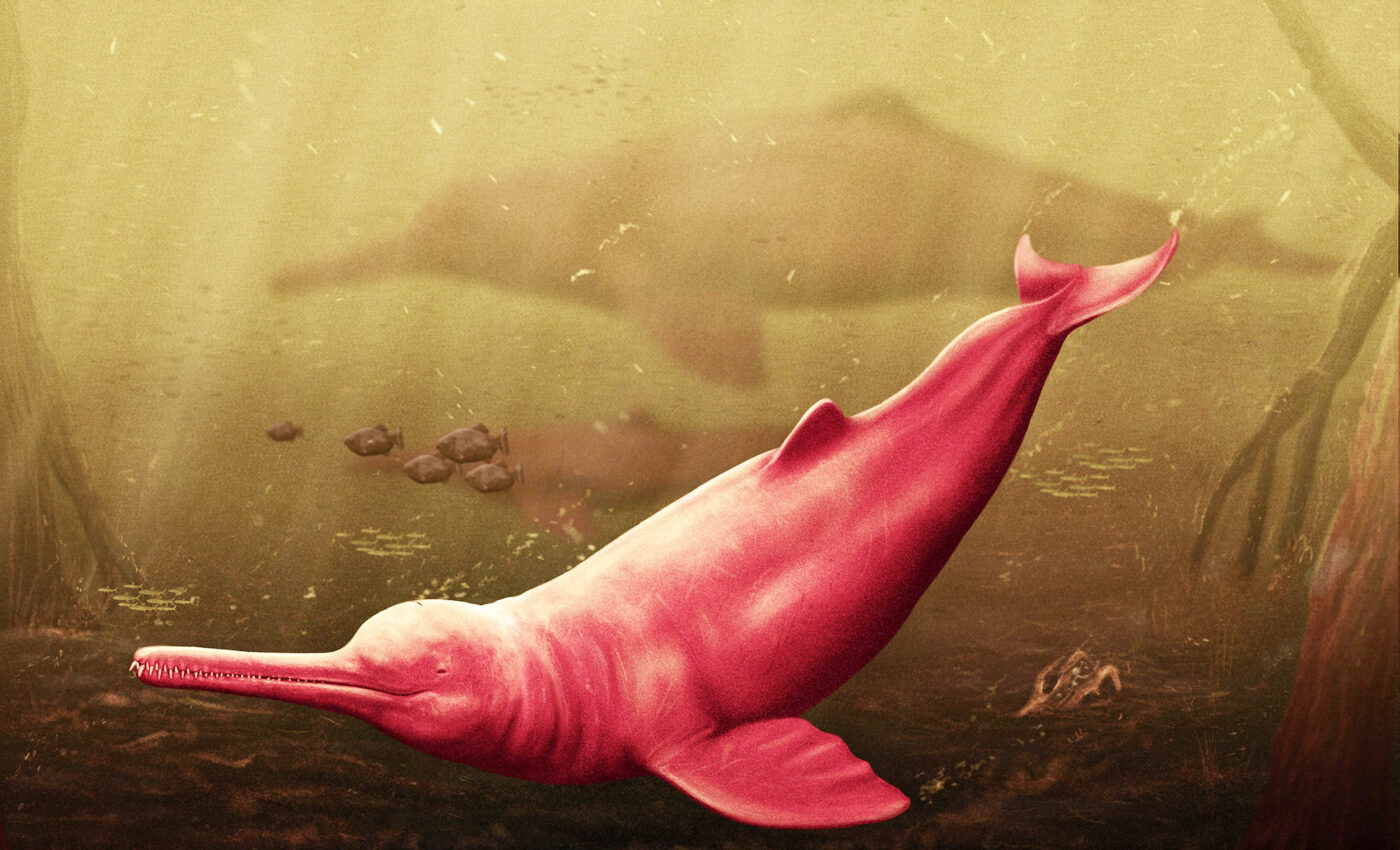
Giant new dolphin species, Pebanista yacuruna, discovered in Peru
Did you know that millions of years ago, a dolphin bigger than a car roamed the rivers of the Amazon basin? Named Pebanista yacuruna, the species is the largest of its kind ever recorded, measuring over 11 feet in length.
Paleontologists from the University of Zurich (UZH) have discovered the fossil of a massive freshwater dolphin that lived in the Peruvian Amazon region around 16 million years ago.
Pebanista yacuruna takes its name from the mythical ‘Yacuruna’, an aquatic people believed to inhabit the Amazon in local folklore. This legendary connection seems fitting, given how incredible and mysterious this creature would have been.
Amazon and Pebanista
“Sixteen million years ago, the Peruvian Amazonia looked very different from what it is today,” said lead author Aldo Benites-Palomino.
Instead of a dense rainforest, the Amazon of Pebanista‘s time was dominated by a vast system of interconnected lakes and swamps known as “Pebas”.
This unique environment teemed with life, offering a bountiful habitat for the enormous dolphins. Imagine a landscape closer to today’s Florida Everglades than the jungles we associate with the Amazon.
Pebanista‘s unexpected cousins
We discovered that its size is not the only remarkable aspect,” noted Benites-Palomino. “With this fossil record unearthed in the Amazon, we expected to find close relatives of the living Amazon River dolphin – but instead the closest cousins of Pebanista are the South Asian river dolphins (genus Platanista).”
This tells us that Pebanista belonged to a group called Platanistoidea, a lineage of dolphins that ruled the world’s oceans many millions of years ago. These ocean-dwelling ancestors journeyed into freshwater, making a home in the newly forming Amazon.
Characteristics of Pebanista yacuruna
Pebanista wasn’t just impressive due to its size. It had a suite of unique features that set it apart as a true freshwater specialist. The researchers suggest the following characteristics:
Size
As discussed, at an estimated 9.19 to 11.48 feet long, Pebanista yacuruna takes the crown as the largest freshwater dolphin ever discovered. This suggests it was likely a formidable predator within its ecosystem.
A skull built for the river
The skull of Pebanista reveals a long snout with large teeth, well-developed crests above the eyes, and a deep basin around the nostrils. All of these point towards a dolphin perfectly designed to navigate, hunt, and thrive in its freshwater world.
Powerful snout
Its snout, particularly strong and wide compared to other dolphins in its family, and the presence of large teeth suggest Pebanista had a unique feeding strategy, likely involving large or hard-shelled prey.
Eyes on the sides
While Pebanista had eyes, the most striking feature of its skull is the large crests above its eye sockets. This is a strong indication that, like modern river dolphins, it relied heavily on echolocation to navigate muddy waters and find prey with incredible precision.
Pebanista extinction
Sadly, despite its early success, Pebanista eventually went extinct. Scientists think the reason lies in dramatic changes to its environment.
“Much of the Amazonian plain was covered by a large system of lakes and swamps called Pebas,” said Benites-Palomino.
Around 10 million years ago, this system gradually dried up and transformed into the Amazon basin we know today. This habitat shift likely made the giant dolphin’s usual prey scarce, leading to its demise.
Amazon river dolphins
Interestingly, the disappearance of Pebanista paved the way for a new group: the smaller ancestors of today’s Amazon River dolphins.
Just like Pebanista before them, these newcomers left the ocean to adapt to the abundant freshwater habitats of the Amazon.
Study significance
“After two decades of work in South America we had found several giant forms from the region, but this is the first dolphin of its kind,” added Marcelo R. Sánchez-Villagra, director of the Department of Paleontology at UZH. “We were especially intrigued by its peculiar biogeographical deep-time history.”
The tale of Pebanista yacuruna showcases the dynamic history of the Amazon. It’s a reminder that landscapes we take for granted were once vastly different.
And somewhere out there, beneath those tangled vines and vibrant flowers, more secrets of this prehistoric world still await discovery.
The study is published in the journal Science.
—–
Like what you read? Subscribe to our newsletter for engaging articles, exclusive content, and the latest updates.
Check us out on EarthSnap, a free app brought to you by Eric Ralls and Earth.com.
—–













